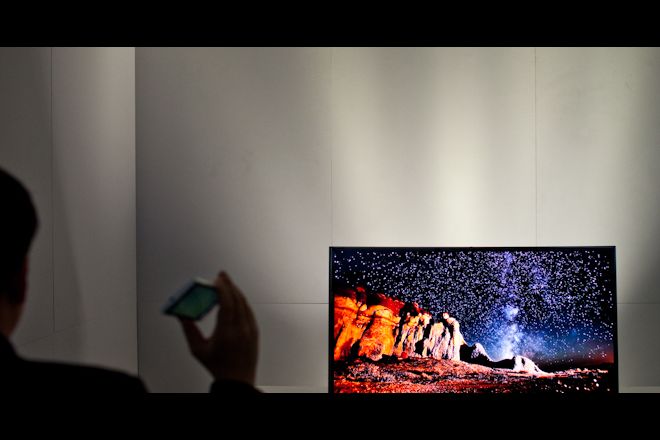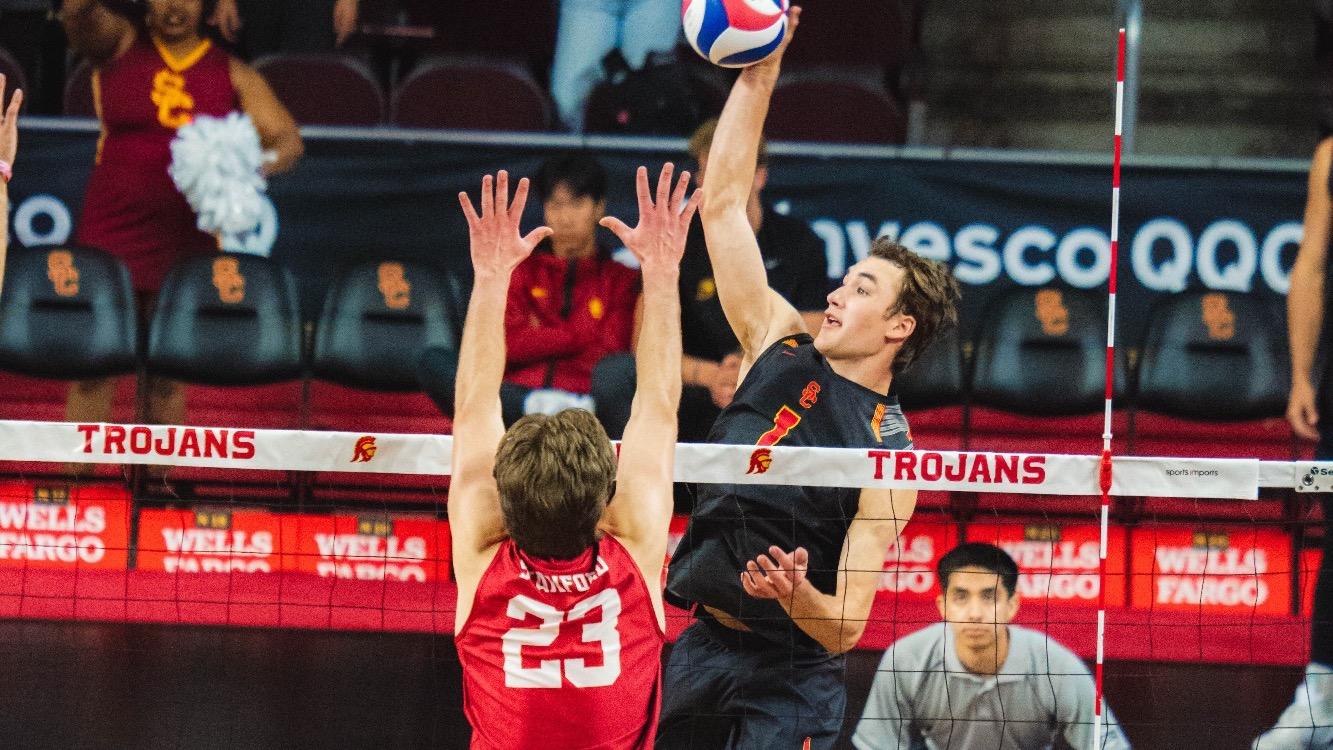Sports
The default TV setting you should turn off ASAP


How to turn off motion smoothing (and why you should)

For many people, motion smoothing is only appropriate for gaming and watching live sports; enthusiasts typically prefer turning off the feature to watch anything else because it can detract from the filmmaker’s original intent, making on-screen images seem artificial or hyper-realistic. This is what’s called the “soap opera effect.”
Samsung
LG TV
Another name for motion smoothing is “motion interpolation,” and it can go by many names depending on a TV’s manufacturer. Below is a quick guide indicating what to look for in your TV’s menu and how to turn off motion smoothing after you’ve had your fill of March Madness.
Google TV (Sony, TCL, Hisense)
- For a Sony TV, it’s called Motionflow.
- For a TCL, look for Action Smoothing.
- On a Hisense TV, two features affect interpolation: Motion Enhancement and Motion Clearness. They’re two different features that do slightly different things; be sure to disable both if you want motion smoothing completely turned off.
Also: How to watch March Madness 2025: The best streaming options
Vizio TV
Technically, it creates consistent image transitions by injecting interpolated frames between existing ones, effectively increasing frame rates from the standard 24 frames per second to 60 or even 120 FPS. For every other TV use case, you’re better off without the feature.
Roku TV (Element, Hisense, RCA, Sharp, TCL)
The motion smoothing feature on a Vizio TV is referred to as “Clear Action.” After pulling up Settings with the gear button, find Picture > Advanced Picture > Clear Action.
The one reason to keep motion smoothing turned on
Also: How to disable ACR on your TV (and stop companies from spying on you)Roku TVs are a bit different. First, you’ll need to open an input or app, then press the asterisk (*) button on your Roku remote. Select Picture Settings, then look for motion smoothing, whose name might vary. (For example, as with the Google TV OS, for a Roku TCL, it’s called Action Smoothing.) If you don’t see any motion-related features directly under Picture Settings, then scroll down to Advanced or Expert Picture Settings to look for motion smoothing options on that menu.On most smart TVs, you can check the Picture settings for any feature that includes the word “motion.” Once you find it, here’s how to disable motion interpolation on various models.
Sports
UAA signs trio of Alaska prep stars

ANCHORAGE (Dec. 12) – Riding the momentum from an outstanding 2025 season, the Alaska Anchorage volleyball team has begun reloading for future success with the signing of Alaska prep stars Indy Kmet, Vaiula Leaoa and Sophie Tapley, head coach Stacie Meisner announced Friday.
The newest Seawolves hail from all over the state and represent three of the four classifications in Alaska high school volleyball – 2A, 3A and 4A.
“We are fortunate to live in a state with great coaching at the developmental and high school levels, which has been proven by the contributions of high-level Alaskans who have come through our program,” said Meisner, whose team went 23-6 and tied for the Great Northwest Athletic Conference title this season. “We are thrilled that Indy, Ula and Sophie have decided to continue the tradition and welcome them to the Seawolf family.”
A 6-1 outside hitter, Kmet led South Anchorage to the Cook Inlet Conference regular-season title and an ASAA 4A State Tournament berth, along with earning MVP honors at the prestigious Dimond/Service tournament. She was also a key member of the 2024 South squad that finished state runner-up, making the ASAA All-Tournament Team as a junior.
Coach Meisner says…
“Indy is a strong athlete who we had the opportunity to work with at camp over the summer. She is incredibly coachable and a great all-around player with a lot of potential for continued improvement. She has impressive instincts on defense and puts up a big block in the front row. We are excited to see what she will bring to the table next fall to only increase the physicality of our roster.”
A 6-foot outside hitter, Leaoa finished a legendary career at Unalaska last month, leading the Raiders to a second consecutive 2A state title and a 39-match win streak to end her career. The Outstanding Hitter award-winner at this year’s state tournament, she ripped 19 kills in the title-match sweep of Su Valley.
Coach Meisner says…
“Ula is a really special player out of Dutch Harbor; it’s not often we see a player of her caliber coming from rural Alaska, and we are thrilled that she wanted to join our program. She is already very athletic and physical, with a big jump and a heavy arm swing. She also came to camp in July, so we got to work directly with her, and I believe her ceiling is going to be incredibly high.”
A 5-8 rightside hitter, Tapley led Kenai Central to its third 3A state championship in four seasons this year, earning Outstanding Hitter and All-Tournament honors. Tapley, who only started playing volleyball in seventh grade, was also an all-tournament selection at the 2024 state tournament.
Coach Meisner says…
“Sophie is a springy, left-handed attacker who sees the court well and plays an aggressive game. Her size is deceiving as she jumps incredibly well and has a very fast arm on her attack. We look forward to seeing how she will develop and continue to grow.”
The trio gives UAA five Alaskans on its 2026 roster, joining sophomore rightside hitter Emma Beck (Kenai) and sophomore libero/defensive specialist Eleasha Sapon (Anchorage/Dimond).
Sports
UGOLINI NAMED TO ALL-ECAC SECOND TEAM

DANBURY, Conn. – Arianna Ugolini picked up another major award on Friday afternoon, earning a selection to the All-ECAC Second Team.
Ugolini’s surplus of awards include America East Player of the Year, First Team All-Conference, and an honorable mention to the AVCA All-Region team.
She led the America East in several statistical categories including kills (419), aces (43), and points (476.5). Her 419 kills and 3.99 kills/set are now the most in a single season in Bryant’s Division I history. This season, she also eclipsed 1,000 career kills and points. She became the fifth player in Bryant’s Division I history to surpass 1,000 kills.
Sports
No. 1 seed Texas hosts No. 4 seed Indiana in the Sweet 16

The Longhorns also welcome welcome No. 5 seed Stanford and No. 10 seeWisconsin to the Forty Acres for the Sweet 16 and the Elite 8. Friday’s match marks the Longhorn’s 42nd appearance in the NCAA Tournament and the 20th-straight Sweet 16 appearance under head coach Jerritt Elliott, the longest active streak in the NCAA.
The No. 4 seeded Hoosiers stand No. 15 in the AVCA rankings and are making only their sixth all-time NCAA tournament appearance and second trip to the Sweet 16. Indiana is the only Power Four program who has three different players averaging at least 3.21 kills per set this season. On 10 different occasions this year, all three of IU’s top hitters have gone for 10-plus kills each with senior outside hitter Candela Alonso-Corcelles leading the Hoosiers with 3.54 kills per set. Along with Alonso-Corcelles, senior opposite hitter Avry Tatum and true freshman setter Teodora Krickovic received First-Team All-Big Ten honors. Krickovic has averaged 10.67 assists per set this year while Tatum has 353 kills and .324 hitting percentage which are both career highs. When Indiana blocks well, the Hoosiers tends to produce great results with a record of 17-1 when they record at least eight blocks in a set.
No. 1 seeded Texas ranks No. 3 in the AVCA and in the top five in multiple categories across the country, including fourth in hitting percentage (.316), third in kills per set (14.83) and third in assists per set (13.86). Outside hitter Torrey Stafford stands ninth in the country with her 4.74 kills per set average and 12th in the NCAA with 5.32 points per set alongside middle blocker Ayden Ames who holds the fifth spot in the conference with a .383 hitting percentage. Setter Ella Swindle sits ninth in the SEC in assists per set tossing 8.98 while libero Emma Halter holds the back line down ranking ninth in digs per set with 3.64.
Texas has improved its blocking in the back half of the season — in their last five matches, the Longhorns have totaled 51 blocks, compared to the previous five where they tallied only 38 with Ames at the helm with help of true freshman Taylor Harvey and sophomore Nya Bunton to total 201 of the team’s blocks.
Setter Rella Binney and outside hitters Devin Kahahawai and Cari Spears are just a few of the individuals that keep the machine running for the Longhorns. Libero Ramsey Gary, a transfer from Indiana was on the All-Big Ten second team in her first two years as a Hoosier, now faces her former team and could give some insight and understanding on the Indiana game.
First serve in Austin is at 11 a.m. Central on ESPN.
Sports
Nebraska Volleyball sweeps Kansas; advances to NCAA Regional Final
LINCOLN, Neb. (KOLN) – The Nebraska Volleyball team handled business on Friday night sweeping 4-seed Kansas (25-12, 25-11, 25, 25-12). NU will face Texas A&M in the Lincoln Regional Final playing for a spot in the final four.
The Huskers were led by Rebekah Allick who finished with 9 kills on just 9 swings, a perfect 1.000 hitting percentage. Andi Jackson added 9 kills as well and Harper Murray recorded 7 kills with 10 digs.
Bergen Reilly was reportedly sick throughout the week but played through the illness. True Freshman Setter, Campbell Flynn, was OUT for the match and potentially the season as the Huskers Radio Network reported she has a broken pinky finger.
Click here to subscribe to our 10/11 NOW daily digest and breaking news alerts delivered straight to your email inbox.
Copyright 2025 KOLN. All rights reserved.
Sports
Husker Volleyball dominates Kansas, advances to Elite 8

Nebraska Volleyball is back in the Elite Eight for a third straight season. The Huskers swept Kansas in the Sweet 16 in Lincoln, Neb. on Friday night. Nebraska won set one 25-12. Nebraska continued to dominate in set two, earning a win over the Jayhawks 25 to 11. It was more of the same in set three as the Huskers earned the sweep with a 25-12 victory over their old Big 12 foe. “A lot of it is our mentality and how we practice,” said senior Rebekah Allick after the match. “We’re creatures of habit.”Nebraska will play Texas A&M on Sunday in Lincoln. The match will be televised on KETV at 2 p.m. “Here at Nebraska, we feed our middle blockers,” said middle blocker Andi Jackson. “Credit goes to our passers because they put us in great positions.”The Huskers hit .450 while holding Kansas to .029. Nebraska had six aces and only three service errors. Nebraska’s middle blockers had 21 kills on 28 attacks. Both Jackson and Allick led the Huskers with 9 kills. Head coach Dani Busboom Kelly spoke with media on Thursday, stating they have a team-first mindset with one goal in mind: hanging a sixth national title banner in the Devaney Center.PREVIOUS COVERAGE: Nebraska volleyball is ready to take on Kansas as they continue their national title chaseThe Huskers will look to advance to their third straight Final Four. They’re now three games from a sixth national title. Make sure you can always see the latest news, weather, sports and more from KETV NewsWatch 7 on Google search.NAVIGATE: Home | Weather | Local News | National | Sports | Newscasts on demand |
Nebraska Volleyball is back in the Elite Eight for a third straight season. The Huskers swept Kansas in the Sweet 16 in Lincoln, Neb. on Friday night.
This content is imported from Twitter.
You may be able to find the same content in another format, or you may be able to find more information, at their web site.
Nebraska won set one 25-12. Nebraska continued to dominate in set two, earning a win over the Jayhawks 25 to 11. It was more of the same in set three as the Huskers earned the sweep with a 25-12 victory over their old Big 12 foe.
This content is imported from Twitter.
You may be able to find the same content in another format, or you may be able to find more information, at their web site.
“A lot of it is our mentality and how we practice,” said senior Rebekah Allick after the match. “We’re creatures of habit.”
Nebraska will play Texas A&M on Sunday in Lincoln. The match will be televised on KETV at 2 p.m.
“Here at Nebraska, we feed our middle blockers,” said middle blocker Andi Jackson. “Credit goes to our passers because they put us in great positions.”
The Huskers hit .450 while holding Kansas to .029. Nebraska had six aces and only three service errors.
Nebraska’s middle blockers had 21 kills on 28 attacks. Both Jackson and Allick led the Huskers with 9 kills.
Head coach Dani Busboom Kelly spoke with media on Thursday, stating they have a team-first mindset with one goal in mind: hanging a sixth national title banner in the Devaney Center.
PREVIOUS COVERAGE: Nebraska volleyball is ready to take on Kansas as they continue their national title chase
The Huskers will look to advance to their third straight Final Four. They’re now three games from a sixth national title.
Make sure you can always see the latest news, weather, sports and more from KETV NewsWatch 7 on Google search.
NAVIGATE: Home | Weather | Local News | National | Sports | Newscasts on demand |
Sports
USC Men’s Volleyball Set for Inaugural MPSF Media Day

Nygaard and Klein are scheduled to take the stage in Costa Mesa, Calif., for the 11:20 a.m. PT slot and will be available to attending media for 20 minutes. Media unable to attend in person may submit questions via a private Zoom link. All 10 of the MPSF’s head coaches and at least one student-athlete from each program—BYU, Concordia, Jessup, Menlo, Pepperdine, Stanford, UC Merced, UCLA, USC, and Vanguard—will be available for interviews and questions.
2026 MPSF men’s volleyball media day can be viewed in its entirety through MPSF volleyball live stream partner Big Ten Plus and will be moderated by Rob Espero, who has handled play-by-play for numerous collegiate volleyball events and serves as the public address announcer for the MPSF Beach Volleyball Championship. Former AVCA Women’s Volleyball Player of the Year and B1G+ color analyst Sarah Pavan will interview student-athletes.
The 2026 conference championship tournament will be held at BYU’s Smith Fieldhouse (April 22-25). The champion receives the MPSF’s automatic bid to the NCAA Championship set to be played May 9-11 at UCLA’s Pauley Pavilion.
Since its inaugural year (1993), the MPSF has won 18 NCAA championships in men’s volleyball. The conference enters 2026 with 114 NCAA championships, which leads the nation among non-power four conferences.
2026 MPSF MEN’S VOLLEYBALL MEDIA DAY INFORMATION
Costa Mesa Marriott · Costa Mesa, Calif.
Monday, December 15, 2025 | 9:30 a.m. – 3:00 p.m. PT
9:30-9:35 a.m. MPSF Commissioner Foti Mellis
9:40-10:00 a.m. VANGUARD: Brian Rofer (Head Coach) & Logan Freemon (Athlete)
10:05-10:25 a.m. JESSUP: Kyle Steele (Head Coach) & Colin Marks, CJ Osahon (Athletes)
10:30-10:50 a.m. UC MERCED: Chris Carter (Head Coach) & Kaleb Cole, Mason Stokes (Athletes)
10:55-11:15 a.m. PEPPERDINE: Jonathan Winder (Head Coach) & Jacob Reilly (Athlete)
11:20-11:40 a.m. USC: Jeff Nygaard (Head Coach) & Dillon Klein (Athlete)
11:45-12:45 p.m. Lunch break
1:00-1:20 p.m. STANFORD: John Kosty (Head Coach) & Theoren Brouillette (Athlete)
1:25-1:45 p.m. UCLA: John Hawks (Head Coach) & Andrew Rowan, Zack Rama, Sean Kelly (Athletes)
1:50-2:10 p.m. BYU: Shawn Olmstead (Head Coach) & Trent Moser, Jackson Fife, Tyler Herget (Athletes)
2:15-2:35 p.m. MENLO: Ali’i Keohohou (Head Coach) & Josh Friedman (Athlete)
2:40-3:00 p.m. CONCORDIA Jon Girten (Head Coach) & Connor Orrock (Athlete)
All times Pacific and approximate
In 2025, the Trojans (21-7) finished second in the MPSF regular-season standings (8-4) and were awarded the second seed into the conference tournament. There, USC finished as runner-up to Pepperdine, which hosted the championship in Malibu, Calif. USC opened the year with a nine-match win streak for its best start to a season since 1991 (28-0) and won 10 matches in a row (Feb. 26-April 3) for the program’s longest win streak since 2012 (18 in a row). It was the second 20-win season for head coach Jeff Nygaard and the 20th 20-win season in program history. The Trojans spent 13 weeks ranked in the top five and reached as high as No. 3 for the team’s highest ranking since it was also No. 3 in 2015. USC led the MPSF for many weeks in all statistical categories but aces and finished the season as the NCAA leader in blocks (2.86 bps) with 16 matches in double-digits. The Trojans set a new school record for hitting percentage in a match (.691 vs. Dominican, Feb. 8) and hit better than .300 in 19 matches, including north of .400 in 10 contests.
MPSF men’s volleyball information, including championship details, can be found at the conference website MPSports.org and on social media @MPSFSports. For more information on the USC men’s volleyball team, please visit USCTrojans.com/MVB. Fans of the Trojans can follow @USCmensvolley on Instagram, X, and Facebook.
-

 Rec Sports3 weeks ago
Rec Sports3 weeks agoFirst Tee Winter Registration is open
-

 Rec Sports2 weeks ago
Rec Sports2 weeks agoFargo girl, 13, dies after collapsing during school basketball game – Grand Forks Herald
-

 Motorsports3 weeks ago
Motorsports3 weeks agoCPG Brands Like Allegra Are Betting on F1 for the First Time
-

 Motorsports3 weeks ago
Motorsports3 weeks agoF1 Las Vegas: Verstappen win, Norris and Piastri DQ tighten 2025 title fight
-

 Sports3 weeks ago
Sports3 weeks agoTwo Pro Volleyball Leagues Serve Up Plans for Minnesota Teams
-

 Sports3 weeks ago
Sports3 weeks agoSycamores unveil 2026 track and field schedule
-

 Sports2 weeks ago
Sports2 weeks agoUtah State Announces 2025-26 Indoor Track & Field Schedule
-

 Motorsports2 weeks ago
Motorsports2 weeks agoRedemption Means First Pro Stock World Championship for Dallas Glenn
-

 Motorsports2 weeks ago
Motorsports2 weeks agoJo Shimoda Undergoes Back Surgery
-

 Rec Sports2 weeks ago
Rec Sports2 weeks agoRobert “Bobby” Lewis Hardin, 56





















































